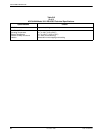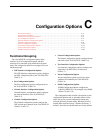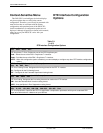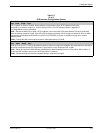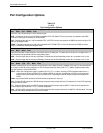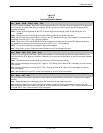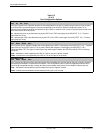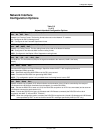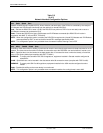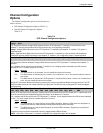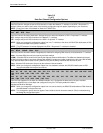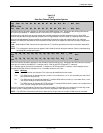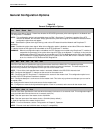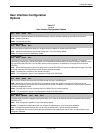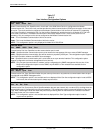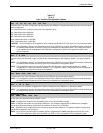
ACCULINK 316x DSU/CSU
C-8 December 1996 3160-A2-GB22-10
Table C-3
(2 of 2)
Network Interface Configuration Options
NET PLB: Enab
Next Enab Disab Prev
Network Initiated Payload Loopback (PLB). Allows initiation and termination of the PLB to be controlled by the receipt of
PLB-Actuate and PLB-Release commands from the network (or remote DSU/CSU).
Enab – Causes the DSU/CSU to enter a PLB (if the DSU/CSU can perform a PLB in its current state) and to cause a
PLB-Release command to terminate the PLB.
Disab – Causes the DSU/CSU to ignore PLB-Actuate and PLB-Release commands (the DSU/CSU will not be in
compliance with ANSI T1.403 and AT&T TR 54016).
NOTE: When this configuration option is enabled, the DSU/CSU recognizes the in-band PLB-Actuate and PLB-Release
codes specified by AT&T as well as the bit-oriented FDL messages specified by ANSI.
NOTE: This configuration option is only available when the network interface framing is set to ESF.
Bit Stuff: 62411
Next 62411 Part68 Disab Prev
Bit Stuffing. Determines when bit stuffing is performed to meet the ones density requirements for data transmission on the
network. You must choose the maximum number of consecutive zeros the DSU/CSU can receive before it inserts a one.
6241
1
– Specifies that a one be inserted in the data stream after 15 consecutive zeros or when the density of ones falls
below 12.5% (factory default and complies with AT&T TR 62411).
WARNING: To comply with Canadian DOC CS-03 regulations, equipment installed in Canada must be configured to
select 62411.
Part68 – Specifies that a one be inserted in the data stream after 80 consecutive zeros (complies with FCC Part 68).
WARNING: To comply with USA Part 68 regulations, equipment installed in the USA must be configured to select
Part68.
Disab – Disables bit stuffing so that ones density is not enforced.
NOTE: This configuration option is only available when the network interface line coding format is set to AMI.



